"We came all this way to explore the Moon, and the most important thing is that we discovered the Earth." -Bill Anders, Apollo 8 astronaut
From hundreds of miles up, the International Space Station speeds around the Earth, completing 18 orbits a day, looking down on us and returning some absolutely fabulous images.
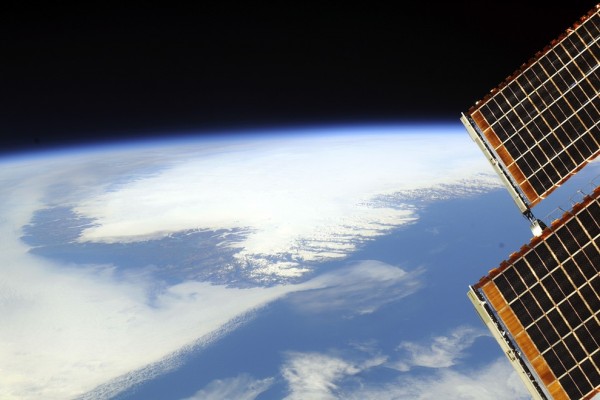
Image credit: Fyodor Yurchikhin and the Russian Space Agency Press Services, of Greenland from the ISS.
But what you may not appreciate is that my favorite images taken from the ISS weren't taken by American Astronaut Don Pettit (better known as @astro_Pettit), but rather by a Russian Cosmonaut, Fyodor Yurchikhin, shown below.
Having spent a total of 370 days in space (which is somehow just 26th most, all-time), he performed five spacewalks, served as commander of the 196-day-long Expedition 15, and has been awarded the Order of Friendship, the NASA Space Flight Medal, and the Hero of the Russian Federation.
But what's much more amazing, to me, is the pictures that he's given us of Earth. I present to you my top 10 list of Fyodor Yurchikhin's photos of Earth, from the International Space Station!
10.) A wide-angle shot of the Earth, along with the solar panels that power the ISS. The curvature of the Earth, the distant limb of the atmosphere, high-altitude clouds and their long shadows are all visible here, looking over the blue ocean of our world. Wide-angle shots like these are spectacular, but from the ISS, we have the ability to look down and obtain incredibly high-resolution, bird's-eye-view photos of some of the most amazing sights on Earth.
9.) Like the dormant and active volcanoes of Kamchatka, in Russia. The volcanic ash from the erupting peak blackens the snow atop not only the erupting mountain, but also its nearest neighbor. Kind of amazing that you can even tell what direction the wind blows, from space.
8.) Any idea what this is? I'll give you a hint: there's only one river in the world that meanders over great distances like this through a rainforest. Did you guess the Amazon? Well done; I did, too, although further research shows that it may be more likely to be one of the Amazon's tributaries.
7.) How about glaciers? The Patagonian glaciers of South America are sadly among the fastest melting in the world, but their beauty is undeniable, and Fyodor's shot from the ISS captures it in a way that no terrestrial shot ever has.
6.) Remind you of Van Gogh's Starry Night? Me too, but unbelievably these are whorling clouds that form on the boundary between two regions of air moving over the ocean at different relative speeds. You may be more familiar with formations like this on gas giant planets, but Earth has them too, just on a much smaller scale, and that's what you're seeing here.
5.) While this may look like a voyage to the stars, it's actually the opposite: an unmanned Progress spacecraft -- the ISS gets three to four of them a year for resupplies -- leaving the space station after a successful resupply. The same shape, size and design as the human-carrying Soyuz, this was gently let go, where friction with the Earth's atmosphere eventually caused it to fall and burn up during re-entry. (But, for some reason, you only hear about the one that didn't!)
4.) The one photo in this collection whose location I cannot identify at all, this beautiful, pristine lake reflects the blue color of the sky above. (Update: Thanks to The Bobs in the comments, who successfully identified that this lake is from the south of the Tibetan Plateau, with the following Lat/Lon coordinates: 29.802369N 86.951294E. Well done!) Why is the smaller lake, to the left, a different hue? Although I'm not 100% sure, my guess is that this lake is very shallow. At very low depths, the algae living on the floor of lakes like this can often change the appearance of the water when viewed from above; the large lake exhibits this on the lower left rim. (But this is just a hunch.)
3.) Is this a human-caused feature? A quarry of some sort? Or maybe an impact crater, from a long-ago asteroid strike? No; it's the Richat Structure from the Sahara Desert! An old, hardened volcano dome that gradually eroded over hundreds of millions of years, the rocks of the central region date to Pre-Cambrian times, with the outermost layers "only" some 400 million years old. For contrast, the sand dunes on either side shift their appearance in a matter of only a few days.
2.) Did the Superman logo just meet a watery grave? Unlikely; this ring-like structure in the middle of the ocean is known as an Atoll, where a fringing coral reef forms around a volcanic island over 100,000 years or more, and then the island itself completely erodes away over tens of millions of years! The resulting rim of coral, poking above the ocean's surface and enclosing a watery lake, is one of nature's most spectacular sights. This particular one is Atafu atoll, from the New Zealand territory of Tokelau. And finally...
1.) Illuminated by the Sun as the ISS approaches the day-side of the Earth, this photo -- my favorite -- shows the limb of the Earth, the transition between space and the upper atmosphere, the cloudy reflections of sunlight, and, in black shadows, activity on our world that could either be volcanic eruptions or human-caused pollution; it's difficult to tell from this angle.
Not bad for a mechanical engineer with a camera, and thanks to TriggerPit for an even larger compilation. Hope you enjoyed my top 10 pictures of Earth from the ISS!
- Log in to post comments

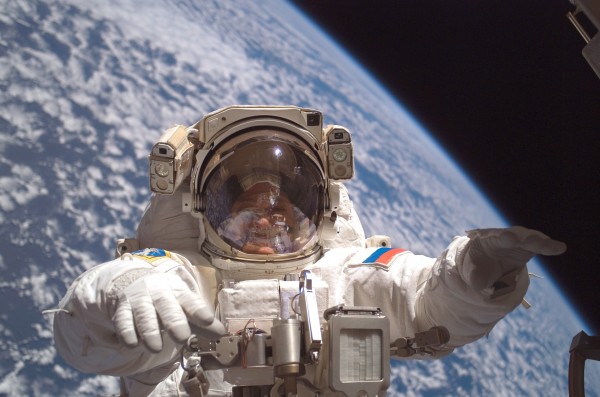
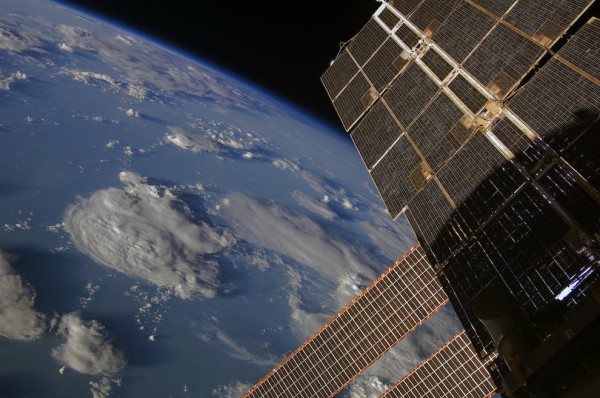
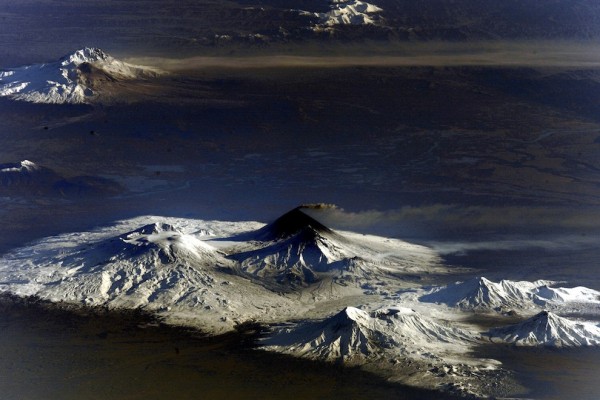
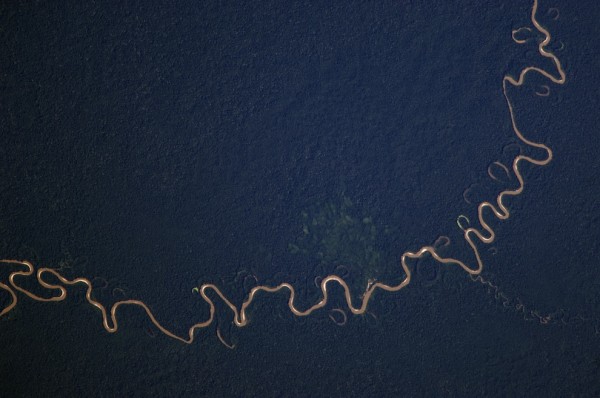
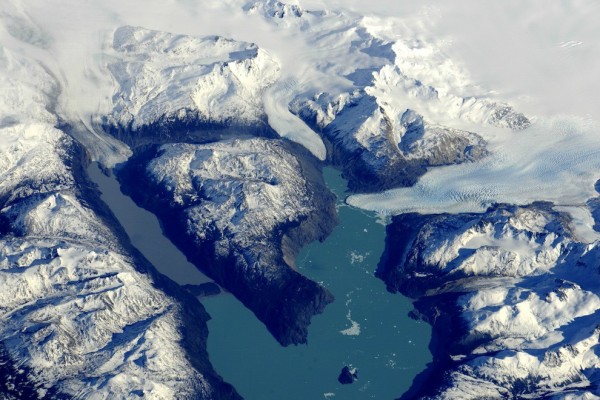
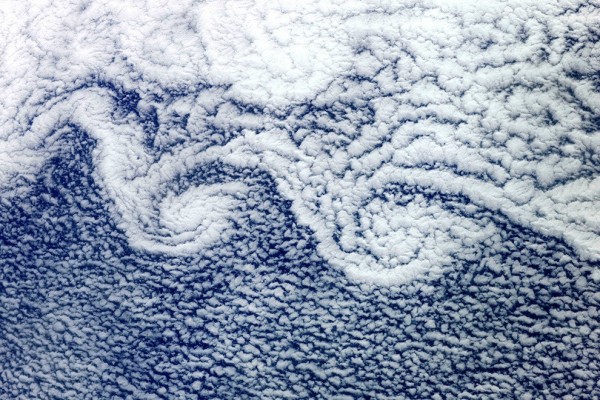
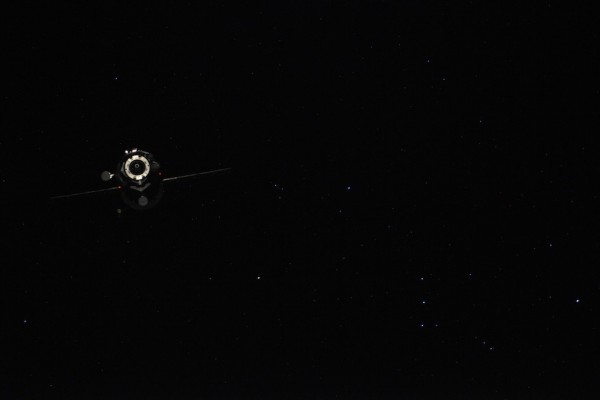
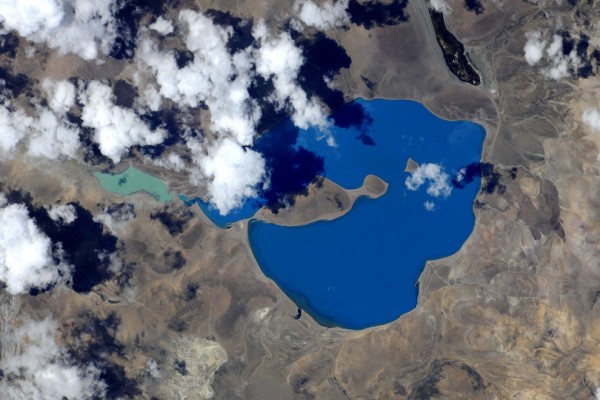
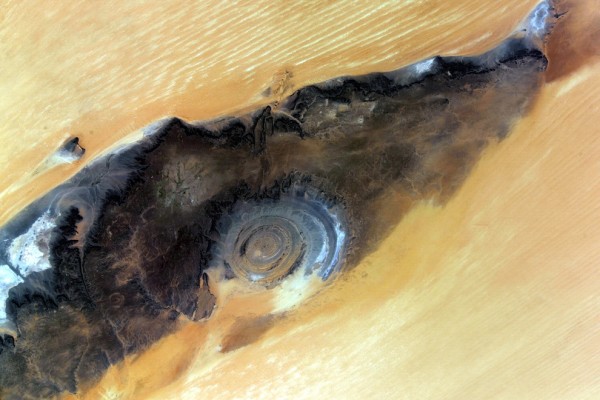
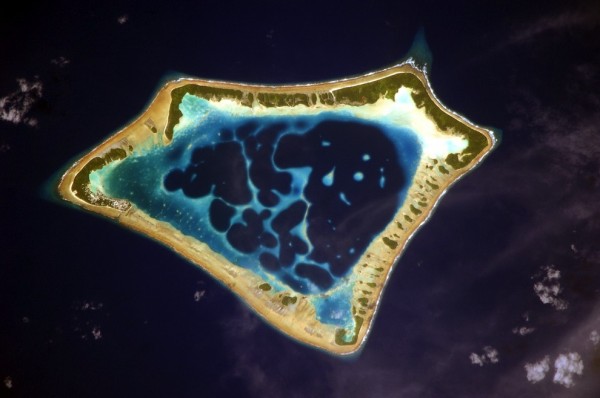
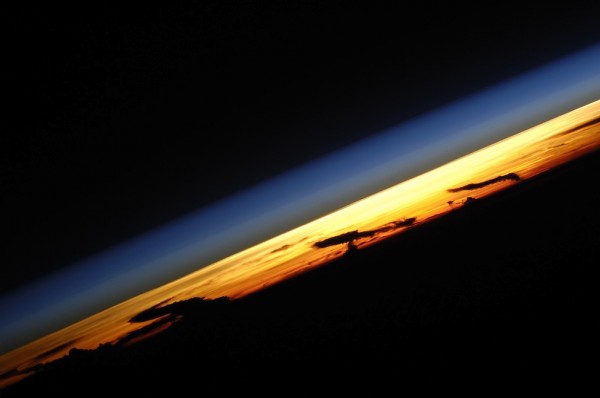
Very interesting photos. Way beyond my understanding. It is hard enough to comprehend all that goes on here on earth. I did find the Van Gogh like one interesting.
The colors of those two lakes actually scream "glaciers" to me. It's not Lake Louise, but look at pictures of that and of the lakes in those national parks.
That lake has GOT to be somewhere in the Atacama Desert, Chile. The first time I saw colours like that was while watching the 2010 Dakar Rally. I did a bit of a hunt the subject on Google Images and that led me to a place called Toconao. http://www.advrider.com/forums/showthread.php?t=529363
In the area is this: http://goo.gl/maps/DWHe
It's not the same lake but just look at those colours. They could even be the result of some mineral deposit colouring the water and accumulating there. If you look closely there is another more green lake to the left of the big blue one in your image.
My guess for the colour of the darker lake above the main one is that it could be a pond that feeds into the larger lake, but has dried up slightly thanks to the extremely rare rainfall and dry climate in the region. I could be wrong, I'm not a geologist...
#4 is on the Tibetan Plateau at about:
29.802369N 86.951294E
The Bobs, that is IT!
Thank you, and well done!
Re photo #4: why would algae have anything to do with it? As I understand it, in shallow water, more light is reflected and travels less far through the water. Since different colors are absorped differently by the water, shallow water looks greeny and deep water (very) dark blue.
wow beautiful, and amazing photography. It is so appreciative and I wish i was an astronaut just to experience it.
I agree with Micky that it is absolutely astounding and beautiful. This is photography at the highest calibre and I commend those involved in capturing and sharing these precious moments and allowing us to see from the point of view of those risking their lives for the sake of science. My sense of disregard has been superseded by gratitude.
u15128033
This is very beautiful to see and I can't believe how wonderful it is and to experience this must be a once in a lifetime.
wow!!!!!!
Love this and beautiful to see. Space exploration must be very interesting and the vast universe is quite intriguing.
COOL!!!!
I wish I was up there to witness this phenomena and to see it for myself. A picture is worth a thousand words.
love the pics and wish there were more. I wondered how could these images be captured?